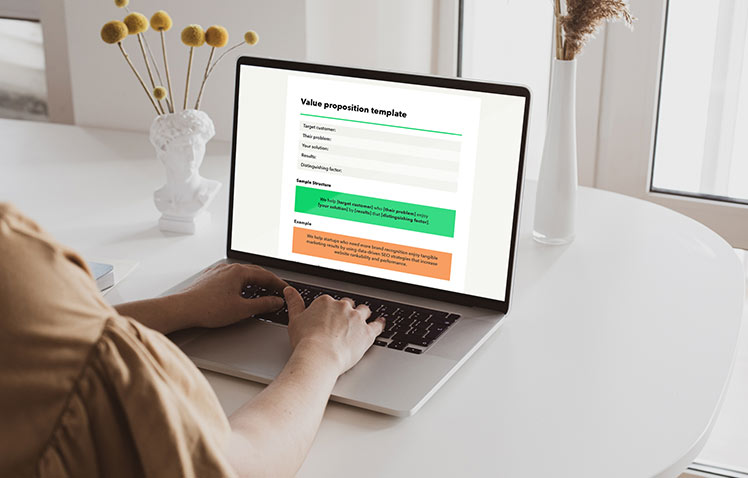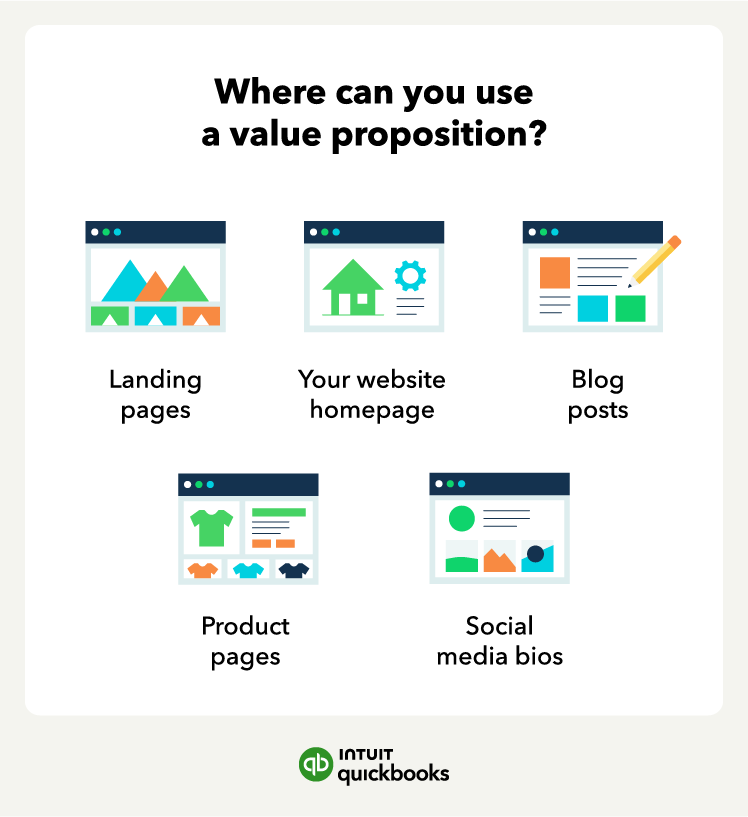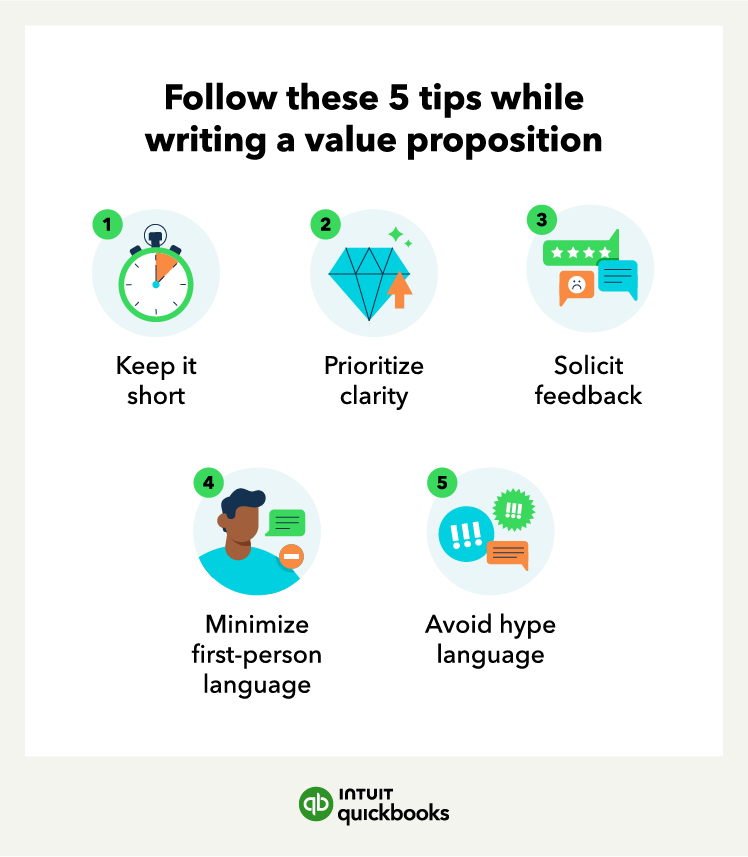The first draft of your value proposition doesn’t need to be the one you stick with. In fact, it’s encouraged to try out several versions to see what will fit best. Here are five tips to help you take your value proposition to the next level:
1. Keep it short
Your value proposition should take five seconds or less to read. If it takes longer than that, it’s too long. Since this statement can also serve as the basis of other marketing collateral, keeping it short makes it easier to flesh out when necessary.
2. Prioritize clarity
Clarity is key. Don’t beat around the bush—get to the point and keep your value proposition clear. Your target audience should know right away what your service or product offering is.
Keep this in mind:
- Let them know what you offer
- Utilize subtle imagery
- Show how you can solve their pain points
3. Minimize first-person language
Remember, your value proposition isn’t only about your business—it’s about your customer. One simple trick to keep your messaging customer-focused is to swap out some of your “I” or “we” references for “you.”
4. Avoid hype language
Your value statement should separate you from your competitors, but the desire to differentiate yourself may tempt you to use overly promotional language. Remember that your value proposition can be the foundation of an elevator pitch, so eliminate technical jargon wherever possible.
You don’t need to say that your service is “unlike anything you’ve ever seen before,” or your product is “a miracle,” or “an answer to your prayers!” If you’ve honed in on your key benefits, the over-the-top language won’t be necessary.
5. Solicit feedback
If you’ve been staring at your value proposition for days on end, it can be hard to see it objectively. That’s why asking customers or other trusted confidants for feedback can be helpful.
You can even do A/B testing on a few different versions of your statement to see which achieves your desired results. Even if you don’t do a formal test, pay attention to how your statement works. If you aren’t seeing results like increased interest or an improved conversion rate, try making some tweaks.
Start your business with confidence
Learning how to write a value proposition is essential to cultivating a successful small-business sales strategy both offline and online. Once your audience realizes your value, you can begin to build client relationships that turn into sales.
Before your audience or customer base grows, consider investing in reliable accounting software to help manage the business growth that’s sure to follow.
How to write a value proposition FAQ
Still have questions about how to write a value proposition? We’ve got answers.
What is the difference between a value proposition and a mission statement?
A value proposition statement tells prospective customers what you have to offer while a mission statement informs them about what values guide your business.
How long should a value proposition be?
A value proposition should be as short as possible, preferably around 20 to 30 words. Keeping it concise will help you repurpose the statement as an elevator pitch, social media bio, or marketing collateral.
What Is an employee value proposition?
An employee value proposition is a statement that showcases what an employee has to offer a potential employer.














